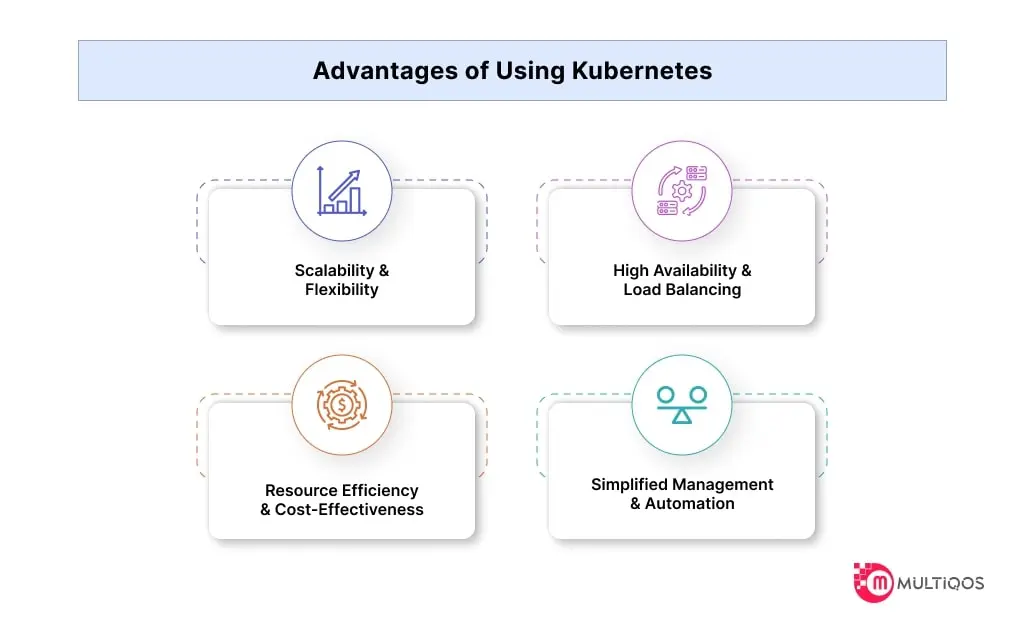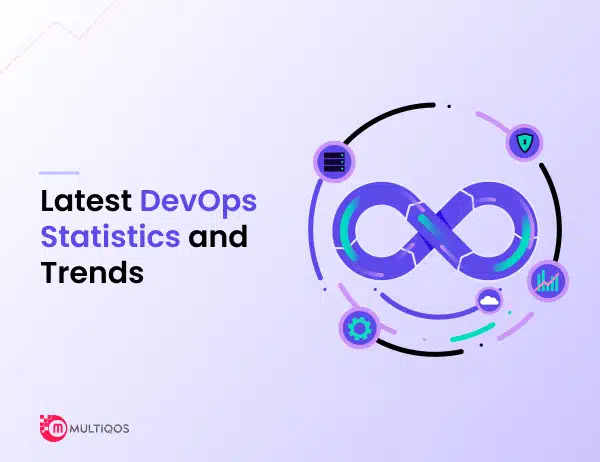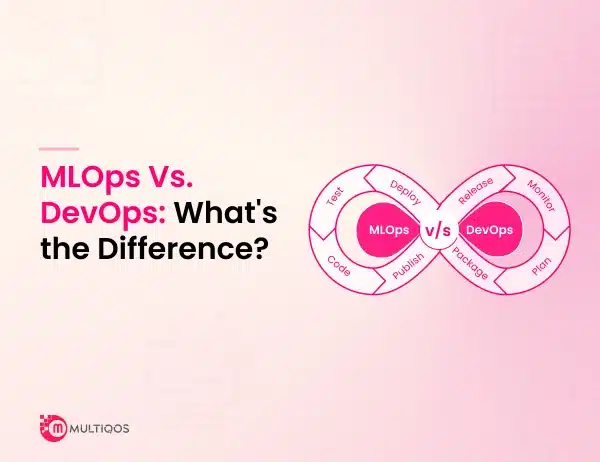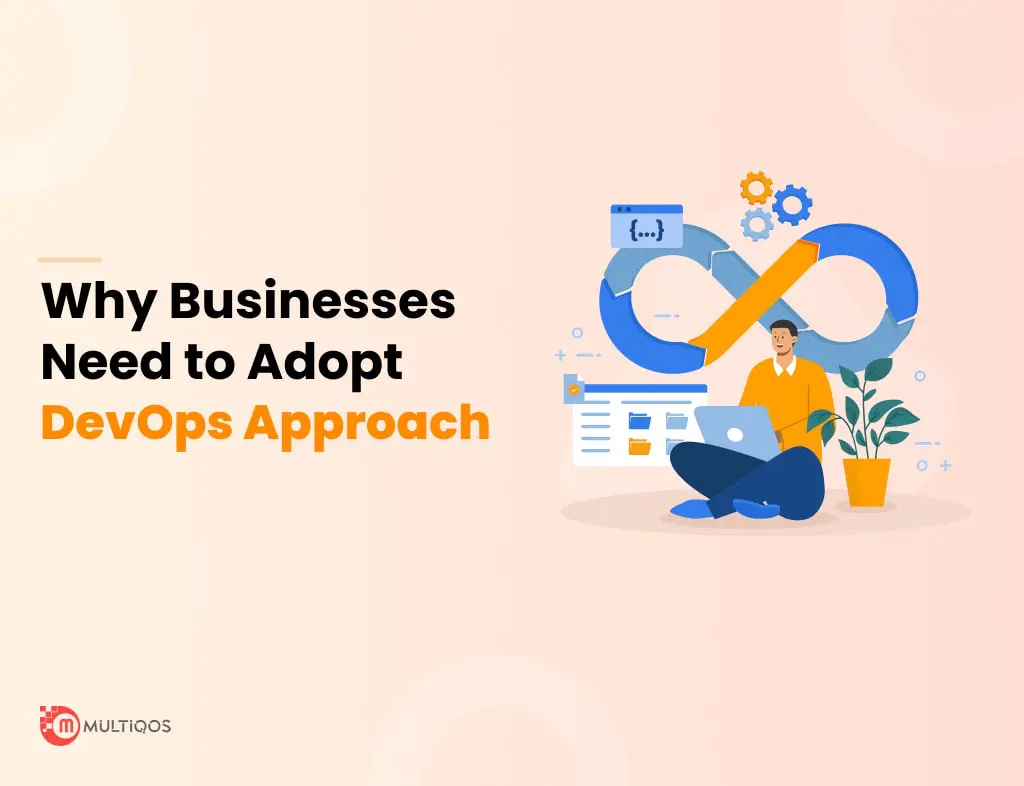
Introduction
As such, in today’s world of cut throat competition, businesses have no other option left but to offer apps that support an excellent client experience and high quality.
Large companies have concerns with their IT platform, which must provide for enhanced apps in areas of availability, protection, flexibility, pricing, and configurability.
This is in which Kubernetes comes into play Kubernetes is an open-supply container orchestration system that automates the deployment, scaling,. Kubernetes is a box orchestration answer that is based on open supply, and the application can be deployed on diverse hosts.
Kubernetes is an open source container orchestration platform and has evolved to a standard level and improved many organizations’ IT infrastructure.
Explore our blog for more information on how Kubernetes will enable any organization to run efficiently and grow amidst the current complex environments.
Why Use Kubernetes: Overview
Before getting too deep into Kubernetes, it’s essential to know what an actual container is. Containers are a way of providing an application with a way to be run on different machines.
These are developed as an application package, that is an application plus all the application’s requirements in terms of code, libraries, and settings contained in a single compact package.
It guarantees the same behavior of the application in a developer’s laptop or a data center or in a cloud environment.
Kubernetes is a platform developed specifically with respect to the management and the orchestration of these containers especially in the large scale.
When you require managing, expanding, and orchestrating tens, hundreds, or even thousands of containers and services, this is where Kubernetes comes into play. It simplifies the challenges of container orchestration by automating the processes of deployment and guaranteeing operations’ efficiency.
Kubernetes was initially created at Google and is currently under the aegis of the Cloud Native Computing Foundation (CNCF) and is still being developed with the help of a dynamic community.
The original authoring organization of Kubernetes is Google; however, its ongoing management and development are now handled by the Cloud Native Computing Foundation (CNCF).
The State of Kubernetes Market
If you are nevertheless skeptical about why Kubernetes is turning into popular, right here are a few information and figures that show that it is crucial and broadly used.
The Kubernetes market, valued at USD 1.46 billion in 2019, is set to increase from USD 1.8 billion in 2023 to USD 9.96 billion by the year 2031. This growth represents a CAGR of 23.4% from 2024 to 2031.
Based on CNCF annual October survey, Kubernetes usage has risen to the extent that more than 60% of the enterprises are using Kubernetes, with the percentage using above 96%.
The Global Kubernetes has been segmented based on product type as Cloud and On-premises products. The On-premises segment has a more prominent share because it enables users to set up the Kubernetes clusters on different local environments.
Kubernetes can be run with existing setups with Virtual Machines, Physical Host with Linux OS like Ubuntu, Centos or RHEL or other on-premises IaaS like OpenStack. That versatility is beneficial for governing various on-premises situations, explaining why Kubernetes is so useful.
Kubernetes is implemented in diverse industries such as the Retail & Consumer Goods, IT & Telecommunications, Government, BFSI (Banking, Financial Services, Insurance), Health & Life Sciences, Manufacturing and many more.
The particular emphasis on the revenue’s share belongs to the IT and telecommunications industry because Kubernetes is most influential in this field. It reduces developers’ tasks by furthering the rate of application deployment and boosts the value proposition of platforms for downstream users.
Kubernetes Architecture and Their Core Concepts
Kubernetes deployment uses the architecture known as a cluster and is provided by Kubernetes. It has two main parts:It has two main parts:
- Control Plane: Executes the management of the cluster.
- Nodes: It was the machines that contained the running of other containers. These can be existing in a physical format or those existing in virtual formats such as electronic media. Pods are sets of containers that operate on a network node of a cluster.
Key Components
1. Control Plane
- API Server: This can be seen as the operations hub of a smart urbanization. It handles requests and the cycle of the application.
- Scheduler: What areas of the network should the new pods be placed to obtain necessary resources and also, check potential health issues.
- Controller Manager: Pillar that maintains the pod or node configurations to ensure the current state of the cluster is in line with the desired state.
2. Nodes
- Kubelet: A node level daemon which negotiates with the control plane to create and manage pods while making sure the containers in said pods are running.
- Container Runtime Engine: Applications that control the running and unprecedented life cycle of full-featured container systems like Docker.
- Kube-proxy: It looks after the incoming and outgoing messages of the pods and works to distribute loads evenly among them.
Core Concepts
- Pods: The fundamental elements in Kubernetes where a single or multiple containers have to share the CPU and memory resources. They can be upsized, upgraded or differentiated as the demand would require.
- Services: It offers predictable points of contact to pods, which allows inter pod communication as well as sharing information with users outside the cluster.
- Replica Sets: The specified number of pod replicas must always be available and active to ensure availability and serve higher workload.
Advantages of Using Kubernetes
As has been already mentioned, Kubernetes has a number of benefits when it comes to containerized applications’ management, and that is why more and more organizations of all sizes are choosing it for their applications. Here are the key benefits:
Scalability and Flexibility
With containers being highly portable, Kubernetes is another level of portable and highly scalable and flexible. It enables you to smoothly cycle your applications up or down depending on the traffic.
What Kubernetes does here is that if due to a higher number of requests your application usage increases, Kubernetes will be able to add more resources. On the other hand if the demand is low, this may down size the resources as a way of saving on costs.
This flexibility means your applications will operate optimally and will not require any form of interference.
High Availability and Load Balancing
Applications are distributed with Kubernetes and hence you are guaranteed high availability of your applications. If one node is unhealthy, Kubernetes will transfer the application to another healthy node, thus causing less application downtime.
Besides, the Kubernetes has the information of load balancing incorporated within the system and constantly balances the traffic load on the nodes. This is useful in ensuring that your applications’ performance and dependability does not vary with utilization rates.
Resource Efficiency and Cost-Effectiveness
Kubernetes also makes effective use of available resources and hence is economical. This means that by running multiple containers on the same machine Kubernetes brings about utilization of resources.
This in turn reduced the necessity to purchase other equipment, which positively contributes to the operational expenses.
It also has support for bin packing, which is the automation of how containers get scheduled with respect to their resource needs and restrictions which will help to minimize waste as well.
Simplified Management and Automation
This is especially through Kubernetes that workloads in the application area of containers can be well managed through automations. It takes care of numerous chores like deployment, scaling, and updates, so the developers get more time to write more code.
The Kubernetes also maintains self-healing where it restarts the failed container and, if possible, reschedules it. This makes the applications to be always healthy and running without having to manually check up on them.
Furthermore, it is fully operational for stateful configuration and focuses on the declarative sentences; thus, you do not have to define how it should be, but only describe it.
Kubernetes ensures that it holds the responsibility of keeping the state meeting the desired state, which in effect, makes the management task much easier.
Kubernetes Use Cases
Here are various ways Kubernetes is used, to meet all your needs about its uses!
1. Recall workloads related to AI, ML, and Big Data
Kubernetes is suitable in handling AI development, Machine Learning, and big data workloads that transform immense data through some series of processes. This is the scalability that makes for stable operation and yet scales the costs of the system down.
2. Continuous Delivery (CI/CD)
Kubernetes complies naturally if a company uses other [CI/CD] tools such as Jenkins and Docker. This enhances automation, and resource utilization to ensure that the CI/CD pipeline manages the deployment and updates of the applications as required.
3. Deploying Microservices
Given this fact, Kubernetes is ideal for use in today’s applications based on the microservices architecture. It facilitates several aspects of handling, growing and deploying microservices while providing means of rolling updates and logging alongside with monitoring.
4. Multi-Tenant Applications
In general applications that operate with multiple customers, such as CRM or cloud storages, Kubernetes offers isolated environments per customer, which are resource-saving and secure.
5. Analytics and Big Data
A clear and efficient way that Kubernetes assists with extensive data sets is through managing data pipelines and scaling the workload, which makes it beneficial for data analysis and big data applications.
6. High-Performance Computing (HPC)
Kubernetes itself is regularly used in HPC for data clusters, datasets, and the sharing of resources for data intensive tasks which makes it appropriate for high performance.
7. Cloud Migration
In organizations that are migrating their on premise data centers to the cloud using the ‘Lift and Shift’ technique, Kubernetes helps. Better, when the migration begins with large Kubernetes pods for the entire app. Nevertheless, the app can easily be divided into segments in subsequent development and, therefore, facilitate the transition process.
8. Serverless Architecture
Serverless architecture becomes widely used because it allows businesses to think more about the code rather than the infrastructures. The resources in the cloud providers are distributed only when required and hence the costs are cut down significantly. But this can result in some sort of dependency where code developed in one platform will not run in the other platform.
It is illustrated by Kubernetes, where the matter is solved by masking infrastructure details and building a serverless environment that can operate under different vendors.
When Not to Use Kubernetes
Exploring why to use Kubernetes fills many gaps in knowledge, and it is equally important to discover when not to use it.
Nevertheless, Kubernetes and its benefits should be mentioned because even in spite of all the numerous advantages it may be useless in some cases. Here are some cases where Kubernetes may be unnecessary:Here are some cases where Kubernetes may be unnecessary:
Management Overhead
Kubernetes can increase a lot of management complexity, especially in projects that need frequent development iterations. As it becomes more complex it takes time to process and get deployed, due to this it is not ideal for use when there is a strict deadline to meet.
High training and management costs are also noted when outsourcing with offshore teams.
If the organization’s development team has not previously implemented DevOps or Kubernetes, training and management can be expensive. This makes Kubernetes an expensive and intricate decision for teams who do not have adequate experienced staff.
Resource Intensive Process
Kubernetes also involves a substantial amount of work in terms of hardware, time, and people to set up as well as maintain. This can prove disadvantageous since your time or people can be tied down and other important aspects of the project are likely to be affected, reducing efficiency and can prove costly.
Alternatives to Consider:
- Docker Swarm: An intermediate to lightweight container orchestration system suitable for smaller deployments or when a team is starting with containerization.
- Nomad: A kind of software that is capable of handling the containerized applications whether on the local setup or on the cloud.
- Serverless Functions: If your application is based on short-living, event-triggered tasks, then using serverless functions on the clouds is more viable.
Emerging trends and technologies in the Kubernetes
The Use of Kubernetes in Machine Learning Kubernetes is used in the running of artificial intelligence or ML applications in containers.
Today’s industries such as finance, healthcare, and e-commerce utilize Kubernetes to manage massive amounts of data and comprehensive calculations. AI/ML models are easily manageable on Kubernetes using tools such as Kubeflow; this makes it suitable for such state-of-the-art applications.
Kubernetes: Cost and Efficiency in the Automation of Back-End Services
Cost optimization is a primary theme in Kubernetes in the year 2024. Firms are also employing tools such as Kubecost to monitor and manage the resources consumption in Kubernetes especially by Industries with huge clusters for instance the e-commerce and the technology industries.
This concern with cost control also ensures that creativity is maintained while containing the costs.
Cloud-Native Infrastructure Expansion
In 2024, cloud-native structure is still ongoing as many companies aim at using Kubernetes for its adaptability in the public, private, and hybrid cloud. It is most pronounced in financial services, retail & consumer goods and healthcare sectors where the flexibility enabled by such techniques is critical in driving the business forward. Istio and Prometheus or any other tool that will facilitate microservices and their management in terms of high availability and fault tolerance are crucial.
Kubernetes Environment and WASM WASM Adoption
WebAssembly will increase in Kubernetes in 2024. This makes it possible to write fast and efficient software for different devices and operating systems because this technology develops tiny and fast applications.
This is useful for industries like tech and gaming especially when it is difficult to understand the slang of the audience. The efficient apps such as these cannot be run on Kubernetes easily, but tools like Krustlet and WasmEdge help in improving this and hence the emphasis on performance and security.
Conclusion
Now that we’ve looked at all the “Why use Kubernetes” points let’s recap!
Kubernetes is vital for any company which wants to enhance infrastructure and make it more effective. Thus, obtaining Kubernetes consulting services, such as those of MultiQoS, creates a competitive advantage through delivering successful container orchestration for innovation and the appropriate solutions for changing customer requirements.
Richard shows that Kubernetes leads to reduced decision-making pains because it handles extensive tasks while organizations focus on core tasks. Through the growing interest of firms in cloud-native solutions, Kubernetes continues to be essential for competitiveness and agility.
Kubernetes ready to blast your business into the next level? Talk to the MultiQoS specialists to receive professional consulting and become closer to more productivity and innovation now!
FAQ on What Is Kubernetes
Kubernetes assists in a smooth transition of your applications to the cloud by containing and organizing your applications in the manner that Kubernetes prefers. It makes deployment, expansion and management of your applications less complicated and easy to achieve.
Kubernetes is highly suitable for managing microservices because it is designed to manage numerous containers by assigning how they function.
Kubernetes is quite robust, though, but it might be overkill for small applications if the abstractions are not fully thought through. Nevertheless, it can still be useful when the extent of the application increases.
K8s is an abbreviation of Kubernetes. Instead of using the entire word, you replace ‘ubernete’ with the digit 8. Add an ‘s’ and you get K8s, pronounced the same as Kubernetes or sometimes ‘kay-eights’ or even ‘kates’. The eight represents the number of letters between the ‘k’ and the ‘s in Kubernetes. The shortened name is popular because Kubernetes is a long and often mispronounced word.
Get In Touch





